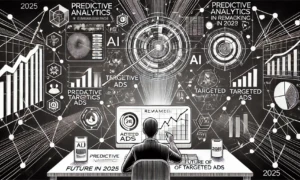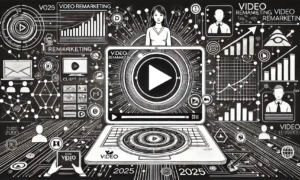In the fast-paced digital marketing landscape of 2025, AI-driven remarketing has emerged as a game-changing strategy for businesses seeking to optimize client conversions. By leveraging artificial intelligence, brands can now deliver highly personalized, data-driven campaigns that resonate with users, driving higher engagement and maximizing ROI. This blog delves into the mechanics of AI-driven remarketing, its latest developments, a standout case study, and projections for the future.
What is AI-Driven Remarketing?
AI-driven remarketing involves the use of artificial intelligence algorithms to analyze user behavior, predict preferences, and deliver personalized ads to re-engage potential clients. Unlike traditional remarketing, which relies on basic user interactions, AI enhances the process by:
- Predicting purchase intent with precision.
- Automating ad placements for optimal timing.
- Tailoring creatives and messaging for individual users.
Key tools like Google Ads AI, Meta Advantage+, and Criteo AI Engine enable marketers to harness these capabilities at scale.
Latest News: AI Advancements in Remarketing
AI technology continues to push the boundaries of what’s possible in remarketing:
- Google Ads AI Updates: In late 2024, Google introduced advanced predictive analytics features, allowing marketers to anticipate user needs even before they revisit a website.
- Meta Advantage+ Expansion: Meta has enhanced its AI suite, enabling dynamic ad placements across Facebook, Instagram, and WhatsApp, resulting in a 35% increase in engagement rates.
- AI Creative Tools: Platforms like Canva and AdCreative.ai are integrating AI to automate ad design, ensuring consistent branding and optimized visuals tailored to user preferences.
Case Study: E-Commerce Brand Leveraging AI Remarketing
Brand: StyleNest, a global fashion e-commerce platform.
Challenge: Low cart-to-purchase conversion rates despite significant website traffic.
AI Remarketing Strategy:
- StyleNest implemented Google Ads AI to analyze cart abandonment patterns and user demographics.
- Personalized dynamic ads showcased abandoned items with exclusive discounts, paired with recommendations based on browsing history.
- AI-driven email sequences were triggered 24 hours post-abandonment, offering free shipping as an incentive.
Results:
- A 47% increase in cart recovery rates within three months.
- A 30% boost in overall revenue attributed to remarketing efforts.
- A significant reduction in customer acquisition cost (CAC) by 25%.
Story: AI-Driven Remarketing in Action
Imagine Jane, a frequent online shopper. She browses a home decor website, adds a lamp to her cart, but leaves without completing the purchase. The next day, she receives a personalized email with an image of the lamp, paired with matching decor items she might like. Later, while scrolling Instagram, she sees an ad showcasing the lamp, now with a limited-time discount. Feeling nudged, Jane completes her purchase—thanks to AI-driven remarketing.
Future Projections for 2025 and Beyond
AI-driven remarketing is set to become even more sophisticated:
- Voice and Visual Search Integration: Ads tailored based on user interactions with voice assistants and image searches.
- Predictive Remarketing: Algorithms that predict churn rates and proactively engage users with tailored offers.
- AR and VR Remarketing: Immersive ad experiences in virtual environments, making remarketing more interactive and engaging.
- Ethical AI Practices: As privacy regulations tighten, businesses will prioritize transparent and compliant AI-driven strategies.
By 2025, AI is projected to drive a 60% increase in remarketing ROI across industries, cementing its role as a must-have tool for marketers.
Conclusion
AI-driven remarketing is not just a trend; it’s a paradigm shift in how businesses approach client conversion. With its ability to predict, personalize, and automate at scale, AI is redefining the marketing funnel, ensuring that no potential client is left behind. For brands looking to stay ahead in 2025, embracing AI-powered remarketing isn’t just an option—it’s a necessity.


